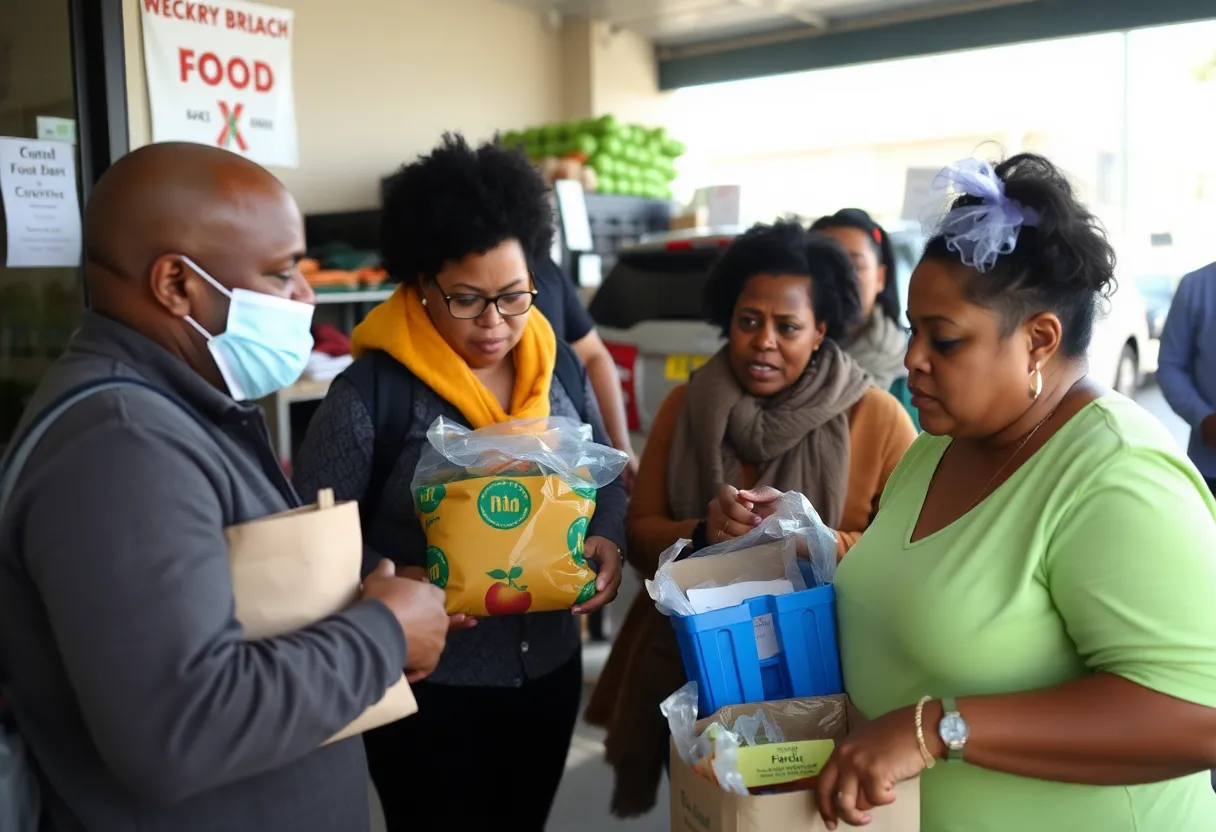News Summary
San Diego County is set to implement significant changes to the CalFresh program, impacting over 240,000 households starting this February. Announced by Board Chair Terra Lawson-Remer, the adjustments follow new federal regulations that tighten food assistance eligibility and work requirements. Stricter documentation is required to maintain benefits, raising concerns about increased demand on local food banks. Advocacy groups warn of severe implications for low-income families as around 60,000 individuals may lose access to benefits amidst rising food insecurity and economic challenges.
San Diego – Significant changes to the CalFresh program are set to impact over 240,000 households in San Diego beginning this February. Announced by San Diego County Board Chair Terra Lawson-Remer, these adjustments follow new federal regulations that tighten food assistance eligibility and requirements.
This overhaul is associated with President Donald Trump’s “One Big Beautiful Bill,” which reduces funding for the Supplemental Nutrition Assistance Program (SNAP), known locally as CalFresh. As part of the modifications, the program will implement stricter work requirements that now extend to previously exempt groups, including veterans, homeless individuals, and those under the age of 66.
In order to continue receiving CalFresh benefits, recipients will now be required to provide documentation to demonstrate compliance with these work requirements. Although exemptions for medical reasons are expected to remain, further guidance on the altered work requirements is still pending.
Residents are encouraged to prepare in advance of the upcoming changes to avoid any potential difficulties once they take effect in February. Concerns have been raised that some beneficiaries may find it challenging to comply with the new stipulations or may be overwhelmed by the increased administrative burden associated with the documentation process.
Local food banks are bracing for an increase in demand due to these new regulations. The Jacobs and Cushman San Diego Food Bank currently serves approximately 400,000 individuals each month, a substantial portion of whom are working families. With estimates suggesting the changes may lead to around 60,000 people losing access to SNAP benefits in San Diego County alone, food banks anticipate heightened pressure on their resources.
The Congressional Budget Office has projected that the changes could result in an overall reduction of about $186 billion in SNAP funding over the next decade. These cuts are expected to have severe implications for low-income families, particularly those with children. Children in these families may face increased challenges with childcare and other living expenses as food security becomes more tenuous.
Further changes impacting asylum-seekers and refugees pose additional barriers, as they will no longer be eligible for benefits. ABAWDs (Able-Bodied Adults Without Dependents) will also be affected by the removal of a prior exemption that allowed them to receive assistance for up to 36 months.
Should these changes proceed, the estimated reduction in meals due to alterations in SNAP benefits could reach 7 million meals per month in San Diego. This represents a significant blow to the local community, where food insecurity is already on the rise. Currently, more than 25% of San Diegans are classified as nutrition insecure, indicating a pressing need for food assistance programs.
The economic implications of these cuts extend beyond individual households, as studies show that every dollar spent in SNAP leads to approximately $1.79 circulating in the local economy. Consequently, San Diego could lose around $22 million in economic activity as a result of these changes.
Advocacy groups note that the cuts to SNAP will make it considerably more difficult for families to feed their children and meet their nutritional needs. As rising food insecurity trends continue to emerge in San Diego, the challenge of navigating these tightened regulations may leave many families scrambling to adjust to a profoundly changed food assistance landscape.
As the February implementation date approaches, it remains vital for residents affected by these modifications to stay informed and proactive in ensuring they meet the evolving requirements to maintain their access to essential food resources.
Deeper Dive: News & Info About This Topic
HERE Resources
Additional Resources
- CBS 8
- NBC San Diego
- Fox 5 San Diego
- Times of San Diego
- 10 News
- Wikipedia: Supplemental Nutrition Assistance Program
- Google Search: CalFresh California
- Google Scholar: SNAP benefits
- Encyclopedia Britannica: Nutrition
- Google News: CalFresh program

Author: STAFF HERE SAN DIEGO WRITER
The SAN DIEGO STAFF WRITER represents the experienced team at HERESanDiego.com, your go-to source for actionable local news and information in San Diego, San Diego County, and beyond. Specializing in "news you can use," we cover essential topics like product reviews for personal and business needs, local business directories, politics, real estate trends, neighborhood insights, and state news affecting the area—with deep expertise drawn from years of dedicated reporting and strong community input, including local press releases and business updates. We deliver top reporting on high-value events such as Comic-Con International, San Diego County Fair, and San Diego Pride Festival. Our coverage extends to key organizations like the San Diego Regional Chamber of Commerce and United Way of San Diego County, plus leading businesses in biotechnology, healthcare, and technology that power the local economy such as Qualcomm, Illumina, and Scripps Health. As part of the broader HERE network, including HEREAnaheim.com, HEREBeverlyHills.com, HERECostaMesa.com, HERECoronado.com, HEREHollywood.com, HEREHuntingtonBeach.com, HERELongBeach.com, HERELosAngeles.com, HEREMissionViejo.com, and HERESantaAna.com, we provide comprehensive, credible insights into California's dynamic landscape.





